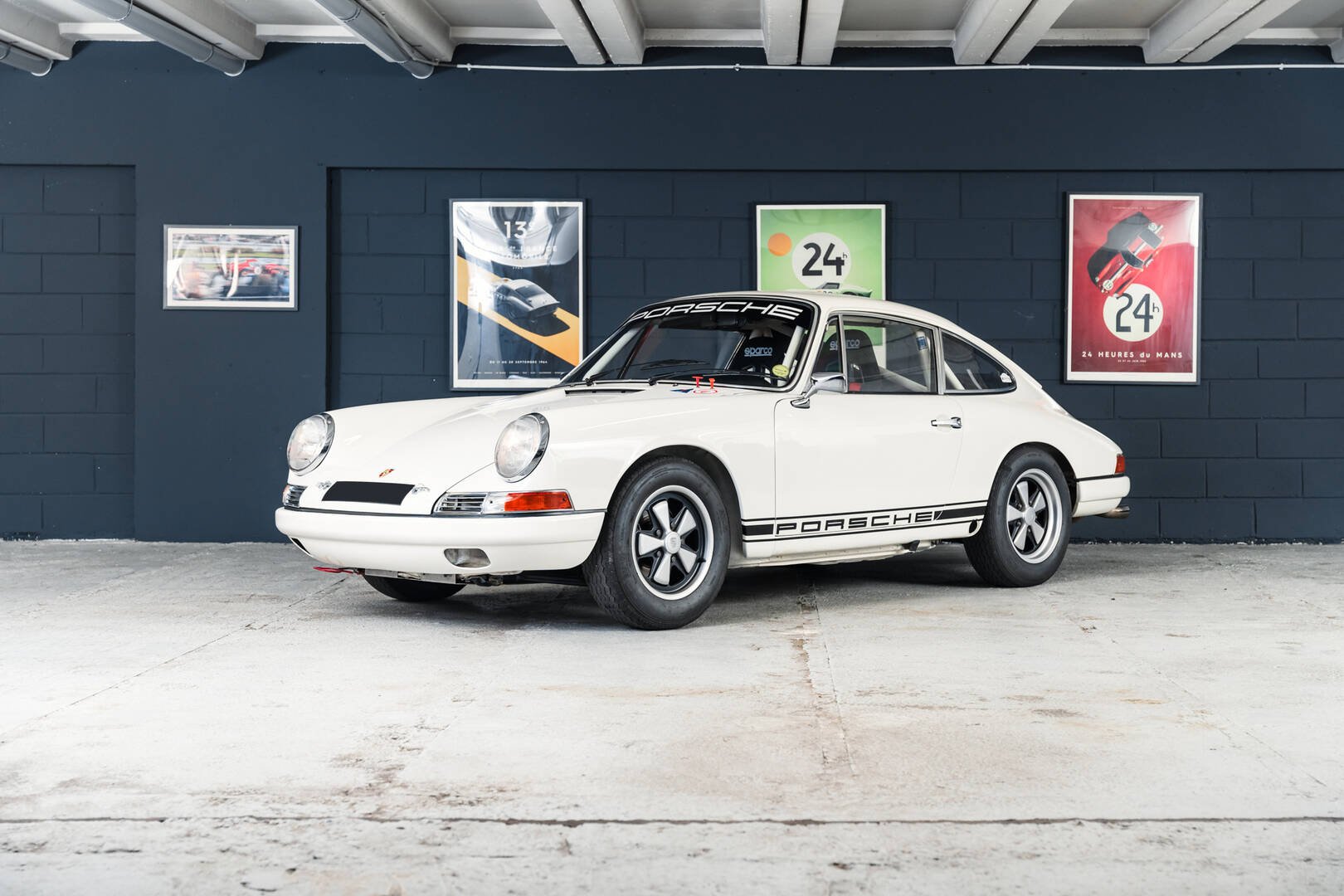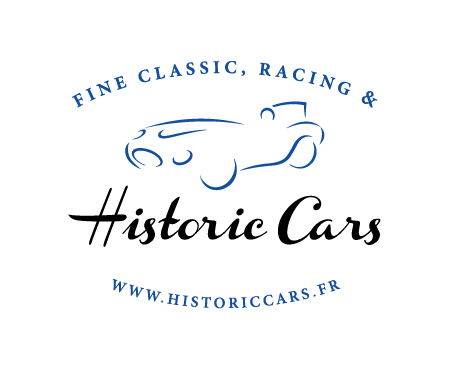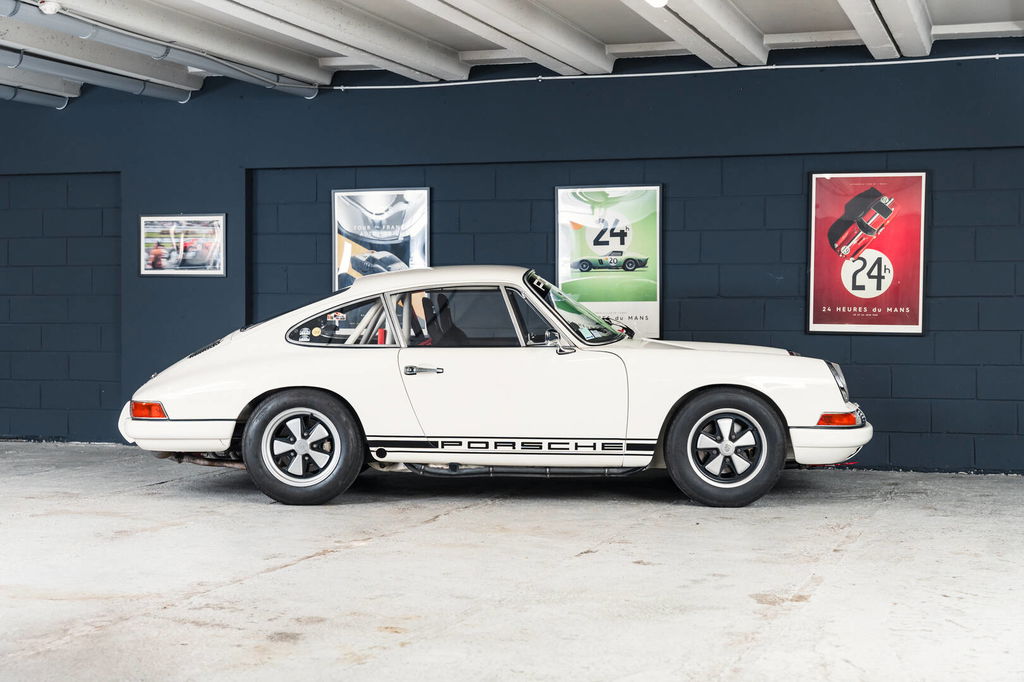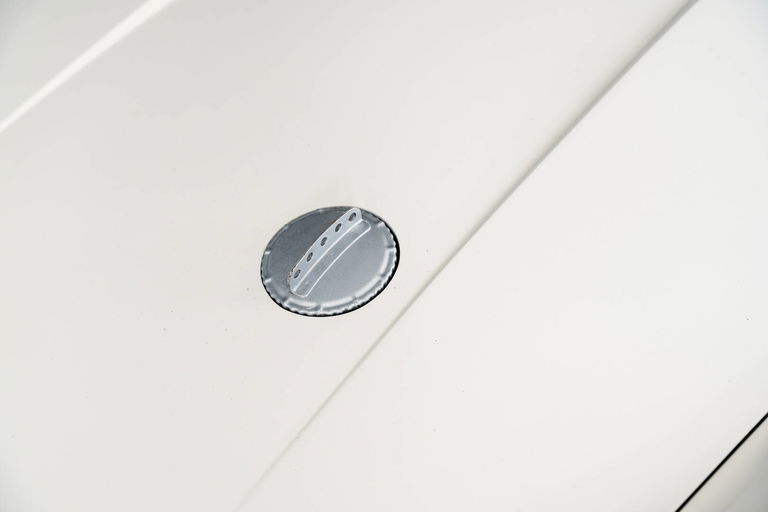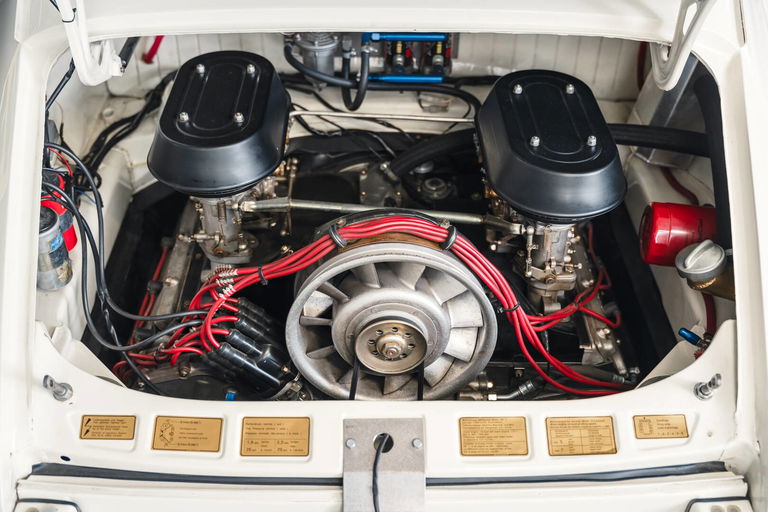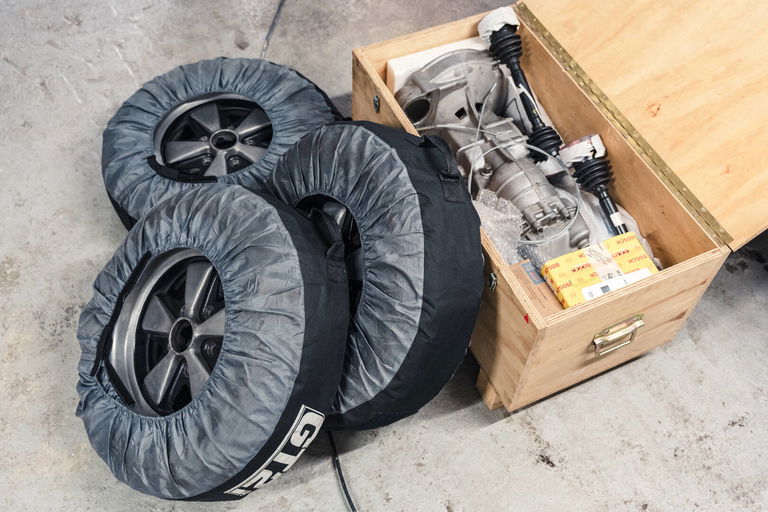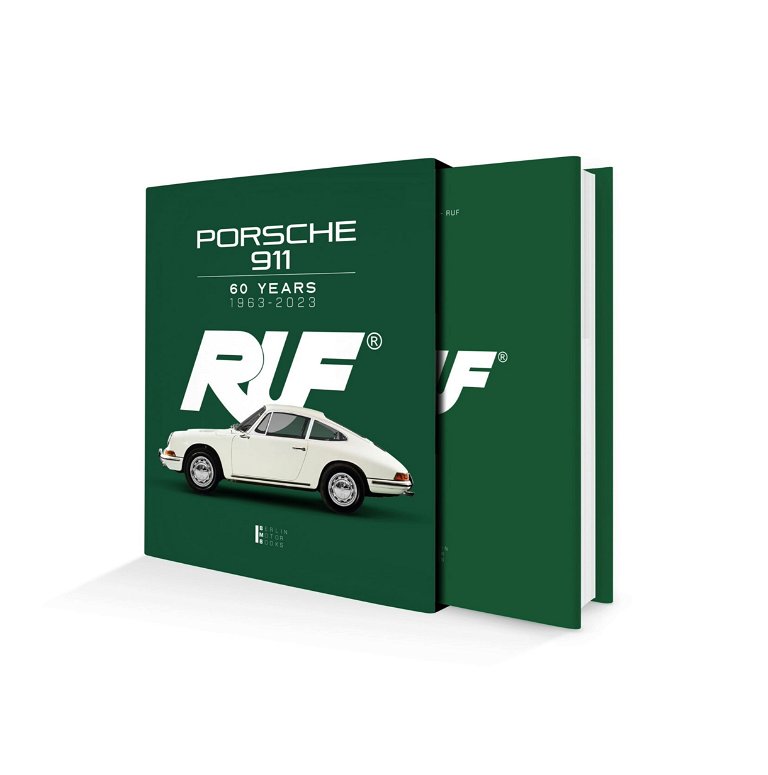In September 1963, Porsche presented the successor to the 356, the Porsche 901, at the Frankfurt Motor Show. A year later, series production of the model, soon renamed the 911, began. The 911, initially produced only as a coupe, had a self-supporting body and was powered by a new 2.0-litre flat-six engine producing 130 bhp.
From the 1967 model year, the 911 was also available as a ‘Targa’ cabriolet, equipped with a fixed roll bar and a folding, retractable roof. From the 1969 model year onwards, the wheelbase was lengthened by 57 mm, resulting in greater driving comfort and more stable dynamic behaviour.
In addition, the first engine derived from the 911 made its appearance on the market with the 911 S. Over the following years, models with the additional designations T, L and E followed in quick succession.
Since its debut in 1964, the Porsche 911 has never been considered to be cheap, but this was even more true in the second half of the 1960s. The range then included the 911 with its 130bhp Flat-6 and the 912, which inherited the Flat-4 from the 356 it replaced. The price difference between the 912 and 911 was significant (35%). The Porsche management had an idea: structure the range. The 911S became the sports version, the 911R the ultra-sporty model for competition homologation, the 911L the luxury model and finally the 911T, an entry-level version. The latter was launched in 1968. That same year, the 911’s wheelbase was lengthened to reduce the oversteer factor that had already scared off a number of over-optimistic drivers.
THE 911T IN THE RANGE
The Porsche 912 was considered the entry-level model in the 911 range. But for enthusiasts, the 6-cylinder is a must. Porsche chose to insert a model between the two. The 912 had 90 bhp, the first 911 had 130 bhp and the 911T will have 110 bhp. Add to that a lower level of equipment and you have a 911 that is finally affordable. In terms of styling, the 911T has everything its big sisters have. It is available in a wide range of colours and with the famous Fuchs wheels.
A 911 FOR RACING?
Contrary to what you might think, many Porsche 911 2.0 T were bought for racing. The reason is simple: it’s a simple car by design, which can easily be prepared for the track. Already light from the outset because it was lightly equipped, it offered good value for money for this type of use. The 2.0-litre 911Ts only went on sale from the end of 1967 until 1969. That year, the engine capacity was increased to 2.2 litres.
While the 911 is one of the winningest cars in history, privateers deserve much of the credit. The Porsche factory was so busy building its purpose-built racers during the 1960s that they had little interest in fully backing the 911 for competition.
Fortunately, those in Stuttgart were savvy enough to recognize that people were winning races in Porsche 911s even without factory help. By giving privateers some factory-conceived upgrade options, Porsche could increase the odds of victory for their customers and the chances of free publicity for the company.
Starting in 1966 with the arrival of the lightweight, performance-tuned 911S, Porsche made Rally Kit packages available for aspiring privateer racers. Teams could pick and choose from a selection of competition parts available straight from the manufacturer.
The standard Rally Kit provided anti-roll bars, upgraded brake pads and even endurance-minded options like a dead pedal for the driver. Power enhancements in the form of better venturis and jets for the carburetors and a racing exhaust could bump a 160-horsepower stock Porsche 911S to 175 Hp and beyond—all from two liters of displacement. With rally in mind, protective items like stone guards were also available. Thanks to these tweaks, it’s no surprise that in 1967 the Porsche 911 recorded a slew of victories all over the planet in the hands of privateer racers.
In 1968, the 911 T as well as the 911 S were reclassified from the Touring Car category to Group 3 (Stock GT). Using the lessons learned with the mythical R, Porsche decided to offer a more radical version of its 911 T. The T was the obvious choice, as its body was already 52kg lighter than the S equivalent. Although officially referred to as a 911 T for homologation purposes, the upgraded racer was commonly known as the 911 T/R and to make it more competition-oriented, the car was stripped out of any kind of sound deadening, reducing the total weight by a further 25kg.
Customers had a choice of two engine specifications. The first was the 160 bhp flat six as fitted in the 911 S road car. Altogether more potent was the Type 901/22 as originally fitted in the 906 sports racers. Among the differences compared to the production engine was the use of twin-spark ignition. To provide additional engine cooling, a separate oil- cooler was mounted in the front right wheel well. A lighter flywheel, a stronger clutch and a limited slip differential was also part of the package, while different gear ratios were also available.
The competition package was available for DM 5,150 and it is believed that around 35 cars were upgraded to T/R specification. Campaigned exclusively by privateers, the cars were remarkably successful, scoring many Group 3 class wins in World Championship rounds. Erwin Kremer, Rolf Kelleners and Willy Kauhsen also piloted a 911 T/R to an outright win in the Spa 24 Hours.
The Porsche 911 hit the jackpot at the Rallye Monte Carlo in 1968. The team of Vic Elford/David Stone captured the overall victory, and Pauli Toivonen/Martti Tiukkanen placed second overall. Porsche would repeat the overall win at the Monte in 1969 and 1970, adding considerably to the legacy of the early 911.
Development of the 911 continued and for the 1969 season, Porsche introduced the S/T model powered by a larger, 2.3-litre version of the flat six engine.
Our car was built in the perfect spirit of the private customer preparations of the time. The owner took care to assemble an exact replica of the many Porsche 911 T/Rs that raced in 1968. In 2012 he bought a 1968 Porsche 911T MY from a French collector, which was delivered to Sonauto (Porsche’s French distributor) in September 1967 with color code 6809 ‘Tangerine’. From that date onwards, he entrusted the entire job to Historic Automobile Racing, a recognized specialist in rally Porsches based in Chaneins (France). The extensive file accompanying the car shows the quality of the work carried out on the body, engine and running gear. Following a complete stripping, the structure was reinforced and repainted in an emblematic color for the period: Light Ivory.
For the engine, the sportiest option was chosen: a light block with dual ignition, similar to the engines used in the 906 prototypes. Assembled in this way, the car will take part in rallies such as the Tour Auto, as well as circuit races such as Le Mans Classic, where it will be entered on the Porsche grid. Freshly serviced, the car is sold with a valid FIA PTH and its racing accessories up to date: ready to take on the special stages of the next Tour Auto, for example. The car comes with a set of parts, including a long gearbox for Le Mans, 4 wheels, transmissions and various accessories.
